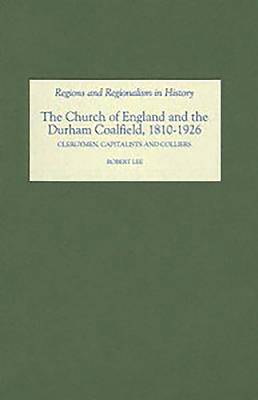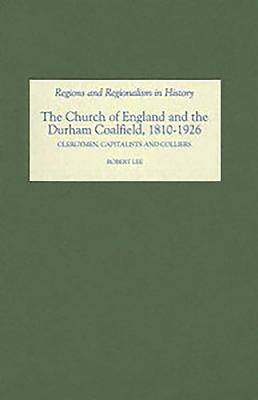
Door een staking bij bpost kan je online bestelling op dit moment iets langer onderweg zijn dan voorzien. Dringend iets nodig? Onze winkels ontvangen jou met open armen!
- Afhalen na 1 uur in een winkel met voorraad
- Gratis thuislevering in België vanaf € 30
- Ruim aanbod met 7 miljoen producten
Door een staking bij bpost kan je online bestelling op dit moment iets langer onderweg zijn dan voorzien. Dringend iets nodig? Onze winkels ontvangen jou met open armen!
- Afhalen na 1 uur in een winkel met voorraad
- Gratis thuislevering in België vanaf € 30
- Ruim aanbod met 7 miljoen producten
Zoeken
The Church of England and the Durham Coalfield, 1810-1926
Clergymen, Capitalists and Colliers
Robert Lee
€ 97,95
+ 195 punten
Omschrijving
A detailed survey of the Anglican mission to the coalfields in an era where rapid industrialisation crucially affected the old ecclesiastical structures. In 1860 the Diocese of Durham launched a new mission to bring Christianity - and specifically Anglicanism - to the teeming population of the Durham coalfield. Over the preceding fifty years the Church of England had become increasingly marginalised as the coalfield population soared. Parish churches that had been built to serve a scattered, rural medieval population were no longer sufficiently close - or relevant - to the new industrial townships that werebeing constructed around the coalmines. The post-1860 mission was a belated attempt to reach out to the new coalfield population, and to rescue them from the forces of Methodism, labour militancy and irreligion. It was posited onthe need to build new churches, to delineate new parishes and to recruit a new type of clergyman: working-class and down-to-earth in origin and outlook, and somebody who could make an empathetic connection with his new parishioners. This book is a detailed exploration of the way in which the Church of England in Durham handled its mission. It follows the Church's relationship with the coalfield, which ranged from an early-nineteenth-century aloofness to an early-twentieth-century identification which many church leaders considered had gone too far, and in so doing reveals how the Durham experience relates to national attempts to maintain Anglicanism's relevance and presence in an increasingly secular and sceptical society. Dr ROBERT LEE lectures in History at the University of Teesside, Middlesbrough.
Specificaties
Betrokkenen
- Auteur(s):
- Uitgeverij:
Inhoud
- Aantal bladzijden:
- 354
- Taal:
- Engels
- Reeks:
- Reeksnummer:
- nr. 8
Eigenschappen
- Productcode (EAN):
- 9781843833475
- Verschijningsdatum:
- 25/10/2007
- Uitvoering:
- Hardcover
- Formaat:
- Genaaid
- Afmetingen:
- 163 mm x 236 mm
- Gewicht:
- 657 g

Alleen bij Standaard Boekhandel
+ 195 punten op je klantenkaart van Standaard Boekhandel
Beoordelingen
We publiceren alleen reviews die voldoen aan de voorwaarden voor reviews. Bekijk onze voorwaarden voor reviews.











